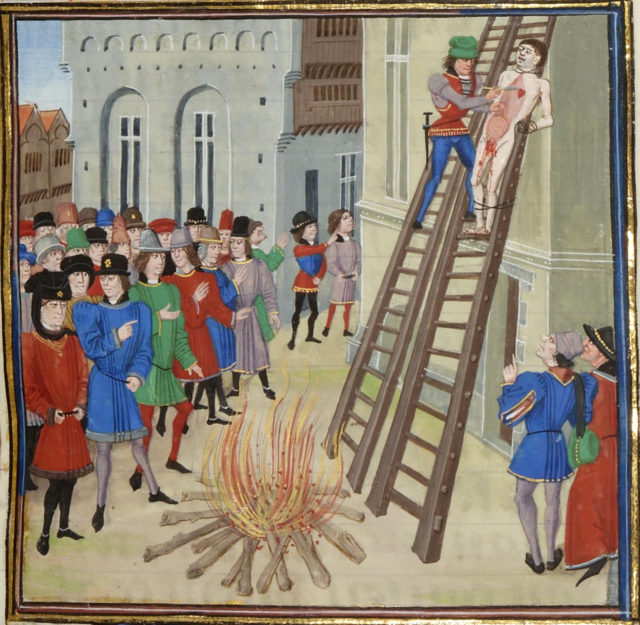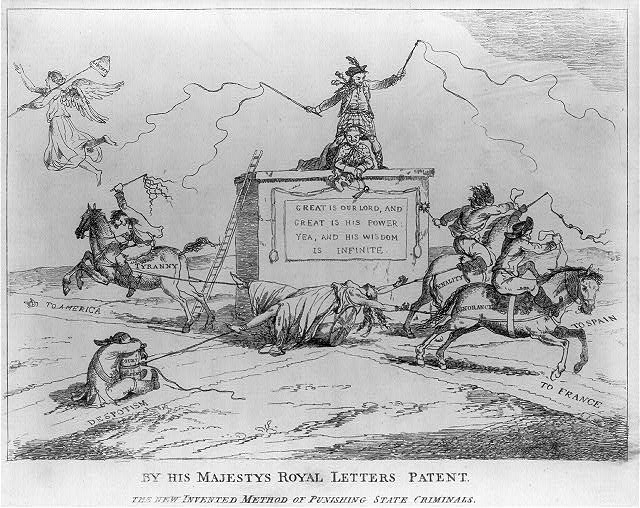There was certainly no shortage of creative punishments in the middle ages. The judas cradle made a person sit on a sharp wooden point, the pear of anguish forcibly stretched bodily orifices, and the iron maiden impaled living victims with metal spikes. One particular punishment – being hanged, drawn, and quartered – was reserved only for those accused of treason.
Hanged, drawn, and quartered
Those convicted of high treason were subject to a brutal, humiliating, and painful execution. Various sources list the order of punishment differently, but each person was subject to all three brutal stages. Hanging was not always meant to kill the accused, but rather to bring them to a point just before death when they would then be cut down. Drawing involved attaching the person to a wooden panel or frame which was tied behind a horse and dragged through the streets.

Illustration of the execution of Hugh the Younger Despenser who was hanged, drawn, and quartered, c. 1470. (Photo Credit: Loyset Liédet/ Wikimedia Commons/ Public Domain)
Some sources indicate that another meaning of ‘drawn’ was occasionally implemented instead of, or in addition to, being pulled by a horse. This was the removal of the individual’s intestines from their body. The accused would have their genitals removed and burned in front of them, sometimes along with their guts, before their head was finally lopped off. They would then be quartered – literally divided into four quarters.
It can always get worse
Following death, the victim’s body parts would be boiled in a vat of spiced water designed to preserve the flesh. They would then be publicly displayed as a warning to others who might think about conspiring against the crown. Although this was the standard way of being hanged, drawn, and quartered, the process could be made both better or worse for the victim. It largely depended on how the king was feeling.

Print showing Britannia drawn and quartered at a crossroad by ropes attached to three horses: Tyranny, Venality, and Ignorance, c. 1780. (Photo Credit: British Cartoon Prints Collection/ Library of Congress/ Wikimedia Commons/ Public Domain)
If the person was allowed to die by hanging before the other parts of the punishment were carried out, then they got off easy. If the king was feeling particularly nasty, however, he could order the quartering to happen while the accused was still alive. To do this, each of their limbs were attached to a horse by rope and the animals were made to walk away in different directions, slowly ripping the person apart.
Πηγή : https://www.thevintagenews.com/2023/02/09/hanged-drawn-and-quartered/

Δεν υπάρχουν σχόλια:
Δημοσίευση σχολίου